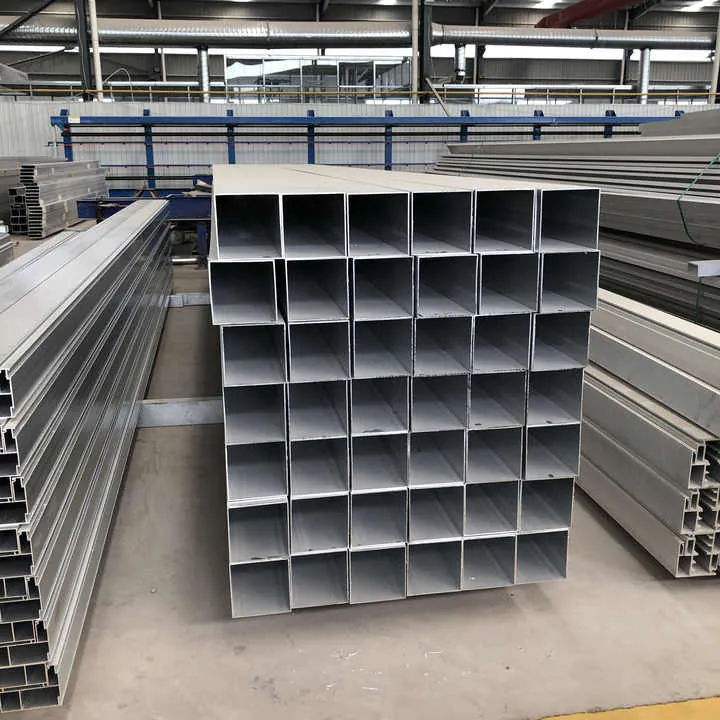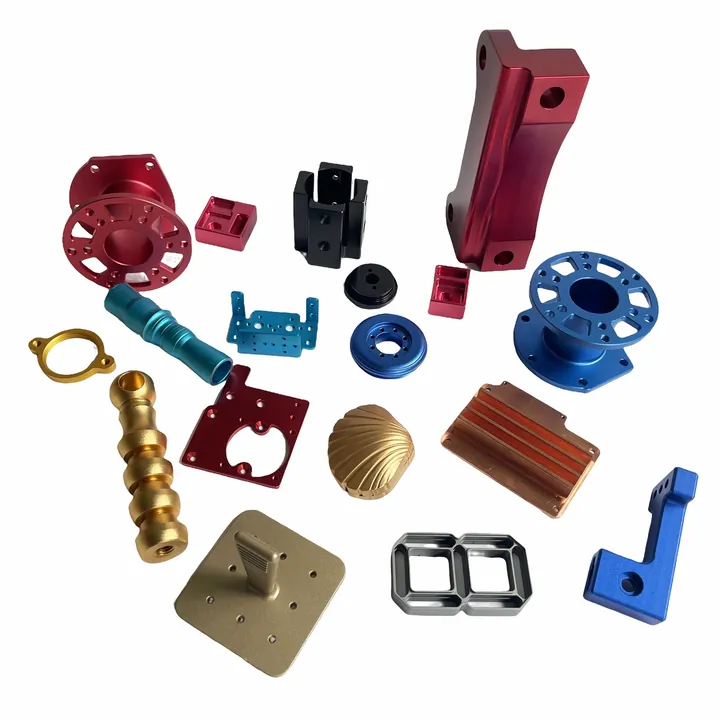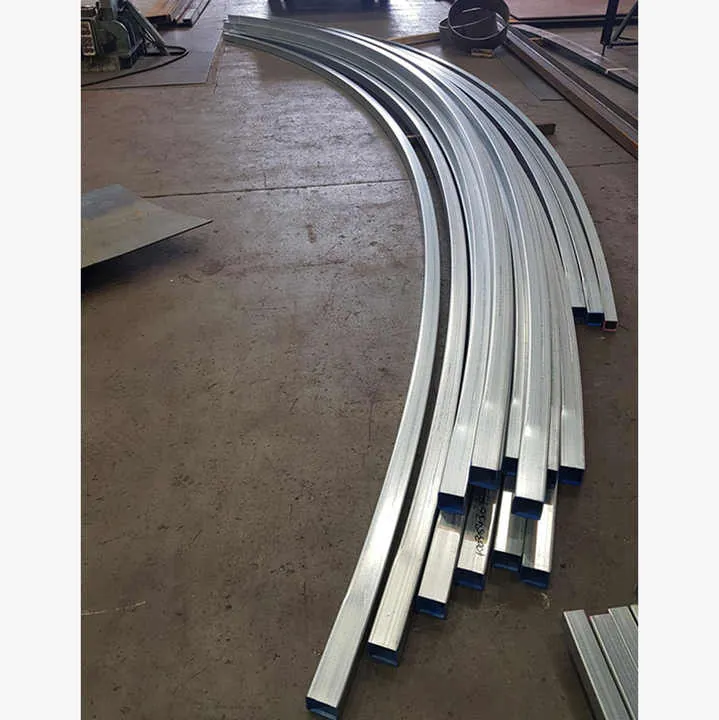Telescoping steel tubing manufacturer aluminum?

I found many questions about using aluminum instead of steel for telescoping tubing. You want clear comparisons and guidance.
You will learn if aluminum works well, its benefits, and who uses it.
Let me guide you through material choice, strength, and applications.
Can aluminum be used instead of steel in telescoping tubing?
I start by comparing material properties. Aluminum is lighter and corrosion-resistant. Steel is stronger and stiffer.
Yes, aluminum can be used instead of steel if design meets load and stiffness needs.

Dive deeper
When I consider swapping steel telescoping tubing for aluminum, I check load, weight, and environment. Aluminum alloys like 6061-T6 or 6063-T5 are common for extruded tubes. They offer good strength-to-weight ratio.
For example, aluminum 6061-T6 has tensile strength around 310?MPa, while mild steel is around 400–550?MPa. That means aluminum is lighter but less strong. In many uses such as camera tripods or telescoping poles, aluminum gives enough strength while being lighter.
Aluminum resists corrosion without paint. This is helpful in outdoor or marine use. Steel needs coatings or stainless grades to resist rust.
Thermal expansion and electrical conductivity differ too. Aluminum expands more with heat. Steel is stiffer and changes less under temperature shifts. Design must allow sliding tolerances if temperature varies.
Machining and welding aluminum is easier. Welding aluminum needs special tools, but extruded parts can be assembled with bolts or rivets. Steel needs welding, which can distort parts and need more skilled labor.
Cost-wise, aluminum is cheaper than stainless steel and lighter to ship. Raw material cost may be similar to mild steel. For large tubing lengths, shipping savings matter.
So overall, aluminum works well where weight and corrosion are key, and where loads are moderate.
Aluminum can replace steel in all load-bearing telescopes.False
Aluminum may not handle very high loads; design must consider strength limits.
Aluminum telescoping tubes resist corrosion better than steel.True
Aluminum naturally forms oxide that protects against rust better than bare steel.
What are advantages of aluminum telescoping tubing?
I highlight key benefits: weight, corrosion resistance, ease of fabrication, thermal and electrical properties, aesthetics.
Aluminum offers lightness, corrosion resistance, easy machining, customizable finish, and recyclability.

Dive deeper
The main advantage is weight. Aluminum weighs about one-third of steel. This makes aluminum telescoping tubes much easier to handle and transport. For example, a 1?m aluminum tube may weigh 2?kg, while steel of similar size may be 6?kg. This matters for portable designs or where worker fatigue is a concern.
Corrosion resistance is another plus. Aluminum naturally forms a thin oxide layer that prevents rust. This helps when tubes are exposed to weather. Steel requires coatings such as paint or plating, and coatings can scratch or wear off. Maintenance is more frequent for steel.
Fabrication and assembly are easier with aluminum. It machines faster, drills and saws easily, and welds quickly with MIG or TIG. Steel takes more heat and skill to weld without distortion.
Aluminum has good conductivity. For antenna masts or cable supports, this may be beneficial. For some electrical applications, steel may need insulation or plating to manage electrical properties.
Aluminum surfaces can be anodized, powder coated, or painted in many colors. This allows aesthetic design and branding. Finished steel often looks industrial unless painted.
Recycling is another advantage. Aluminum is easily recycled with low energy. Finished products are more eco-friendly. Steel is also recyclable but aluminum recycling is more established for lightweight products and transport efficiencies.
Maintenance is easier: No rust means fewer inspections, less repair, and longer lifetime in corrosive environments.
Let me list the advantages:
| Advantage | Benefit |
|---|---|
| Light weight | Easier to handle and transport |
| Corrosion resistance | Less maintenance, no rust coatings needed |
| Machinability | Faster cutting, drilling, and forming |
| Finish variety | Anodized, powder, painted surfaces |
| Recyclability | Lower energy use for recycling |
| Conductivity | Useful for antenna or grounding designs |
These benefits make aluminum ideal when portability and appearance matter. However, careful design is needed if loads are high, or stiffness is critical.
Aluminum tubing needs painting to resist corrosion.False
Aluminum forms a natural oxide layer and resists corrosion without coating.
Aluminum telescoping tubes are more transport-friendly than steel.True
They weigh one?third as much and lower shipping costs.
How does aluminum telescoping tubing compare in strength?
I compare strength, stiffness, and fatigue. I show how design can match steel performance with alloy, wall thickness, and geometry.
Aluminum is less strong and stiff than steel per unit volume, but careful design can reach similar performance.

Dive deeper
Aluminum typically has lower Young’s modulus (modulus of elasticity) than steel. Aluminum is ~70?GPa, steel ~210?GPa. That means aluminum will bend three times more under same load if geometry is identical.
To improve stiffness, I use thicker walls or larger outer diameters. For instance, a 50?mm outer diameter tube with 3?mm wall thickness can be stiff enough for many supports.
Regarding tensile strength, 6061-T6 alloy reaches ~310?MPa ultimate tensile strength. Mild steel is around 400–550?MPa. So steel is stronger for high tensile loads. To use aluminum safely, I ensure load is within material limits and test prototypes.
Buckling is a concern. Long slender tubes under compression will buckle more with aluminum. I calculate critical load using Euler buckling equations and adjust dimensions accordingly.
For fatigue, aluminum endures fewer cycles compared to steel before failure. In dynamic applications, I choose alloys with good fatigue performance and smooth finishes to reduce stress points.
To compare, I often create charts:
| Property | Aluminum 6061-T6 | Mild Steel |
|---|---|---|
| Young’s Modulus | 70?GPa | 210?GPa |
| Ultimate Tensile | 310?MPa | 400–550?MPa |
| Density | 2.7?g/cm3 | 7.85?g/cm3 |
| Fatigue Limit | 95–140?MPa | 200–300?MPa |
With optimized geometry and correct alloy, aluminum tubes can support pull or push loads comparable to steel tubes of similar size. For example, in a sliding mechanism, a thicker aluminum tube can hold equivalent weight.
I use FEA (finite element analysis) to test deflection under load, stress concentration at joints, and buckling. If deflection is acceptable and stresses are below yield, the design is valid. Then I prototype and test physically.
Compared to steel, aluminum design may require more material but still stays lighter. It also saves weight in multi-tube telescoping systems. I ensure wall thickness and diameters are scaled up to meet strength needs.
Aluminum telescoping tubes bend less than steel under load.False
Aluminum bends more than steel due to lower stiffness unless designed with thicker walls.
With correct wall thickness, aluminum can match steel performance.True
Proper design allows aluminum tubes to carry similar loads while remaining lighter.
Which industries prefer aluminum over steel for telescoping tubes?
I explore industries like camera equipment, marine, medical, automotive, and aerospace. Each values aluminum’s weight and corrosion resistance.
Industries include photography, boating, lighting, medical devices, and aerospace applications.

Dive deeper
One big user is photography and film gear. Tripods, light stands, and booms often use aluminum telescoping legs. These need to be lightweight and portable. Load needs are moderate, so aluminum works well. Quick-release clamps on aluminum tubes hold securely.
Marine industry uses aluminum for boat ladders, masts, and railing poles. The corrosion resistance is key in saltwater. Steel would rust quickly without heavy maintenance.
Lighting equipment manufacturers use aluminum telescopic poles for studio lights or street lamps. They favor aluminum for appearance, easy finish, and rust resistance. In temporary setups, they need durability and portability.
Medical device makers select aluminum tubing for IV poles, instrument stands, and mobile carts. Lightweight but sturdy tubing makes it easier for hospital staff to move equipment around.
Automotive and industrial maintenance often use aluminum for telescoping inspection mirrors, antenna masts, and safety rails. They carry small loads but need to be strong and resistant to outdoor elements.
Aerospace and defense use aluminum for support structures, sensors, and deployment booms. The need for lightweight, corrosion-resistant, and stiff tubing suits aluminum well. Some parts are anodized or coated to resist harsh environments.
Here is a breakdown:
| Industry | Application | Why Aluminum? |
|---|---|---|
| Photography & film | Tripod legs, light stands | Portability, corrosion resistance |
| Marine & boating | Ladders, rails, masts | Saltwater resistance, easy fabrication |
| Lighting equipment | Telescopic poles for lamps | Light weight, aesthetic finish |
| Medical & hospital | IV stands, device supports | Clean, lightweight, non-corrosive |
| Automotive & service | Inspection tools, safety poles | Portability, corrosion, cost-effective |
| Aerospace & defense | Sensor booms, support frames | Lightweight strength, corrosion resistance |
In steel-dominant industries like construction or heavy machinery, aluminum tubes are less common. Those need heavy loads and high stiffness. Steel is preferred there.
So aluminum telescopic tubing shines where weight, corrosion-resistance, and portability are more important than maximum load capacity.
Construction equipment often uses aluminum telescoping tubes.False
Construction tools need high load capacity, so steel is more common than aluminum in that sector.
Marine applications often use aluminum tubing.True
Aluminum resists saltwater corrosion and is commonly used in marine industry.
Conclusion
We compared steel vs aluminum tubing, looked at aluminum benefits, evaluated strength and stiffness, and saw real-world uses. Now you know when and why aluminum telescoping tubes make sense.
If you need help choosing alloy, designing tube walls, or prototyping a telescoping system, I can guide you from design to production.



